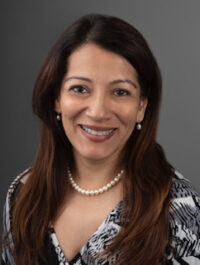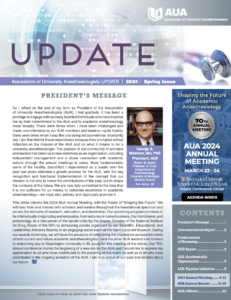The Gap Widened by COVID-19
Before the pandemic there was an unspoken fact: being a woman in academics meant that you were taken less seriously. However, there are several examples of courage, brilliance, and commitment such as in the accomplishments of Dr. Virginia Apgar, among others.
During and after the pandemic there has been a new awakening to this chasm between the genders within academic medicine, and in its reflection, it seems to have widened a great deal. Many leaders and organizations have moved their attention to the important work of fostering diversity and inclusion in the workplace, in order to make the professional and home lives better balanced for women. Examples of these initiatives include the establishment of diversity committees, faculty surveys, inclusion of women in leadership roles dealing with the topic, etc.
However, the new 2021 Women in the Workplace report by LeanIn.org and McKinsey & Company found that the critical work of supporting employees’ well-being and promoting diversity and inclusion is being done disproportionally by women, who may not be recognized for it.[i] “Companies are reaping great rewards from these efforts, but compared to men in similar roles, women leaders are more likely to be exhausted and chronically stressed at work.” What is more alarming is that more than half of women surveyed who manage teams felt burned out ‘often’ or ‘almost always’. Many have considered leaving these roles or changing careers altogether. Many say that the extra work is not being formally recognized. The importance of gender parity in medicine is emphasized by the words of Catherine DeAngelis, the first female editor-in-chief of the Journal of the American Medical Association in its 116-year history, in an editorial: “We will waste half of our genetic pool of intelligence, creativity and critical insights and experience. Medicine simply cannot afford that loss.”[ii]
It is a well-known fact that organizations that support DEI (diversity, equity and inclusion) initiatives have happier employees who support and recommend their companies more. This survey showed that at all leadership levels women were able to engage and champion these efforts more successfully, were more invested and helped employees navigate work-life challenges and other ‘softer issues that are at the core of why academics and employees burn out. They manage relationships better and advocate against bias.
Even though organizations are reaping the benefits of these initiatives there is a disconnect between the effort put in and the recognition given to these women. Social scientists have highlighted, and this is common in academic medicine to put ‘skill before relationships’, and not to value work towards professionalism or burnout as ‘real work’. In addition women are often part of the sandwich generation that has both child and parent care responsibilities at home. Arlene Kaplan Daniels, a famous social scientist coined the term ‘invisible work’: to describe forms of women’s unpaid labor like “housework and volunteer work that, while integral to the functioning of society, is not regarded as work and is culturally and economically devalued”.
This disproportionate burden on women has led to worsening academic productivity. In a recent survey among STEMM (science, technology, engineering, mathematics, medicine) faculty there was no difference in the work hours between men and women, but women with children <5 years of age reported fewer work hours and women's self-reported article submissions decreased significantly during the pandemic; men's productivity metrics did not change.[iii] The authors suggested that academic institutions should consider these disparities when making decisions regarding funding and hiring as well as promotion and tenure.[iv]
When judging academic productivity, the standard is h-index. However, it has been previously reported that women had lower h-indices than men of equivalent rank in ecology and evolutionary science, suggesting that the h-index may have inherent gender bias.[v] Indeed, successful competition for funding is dependent upon generating preliminary data and publishing initial results, which are then cited. Given this disparity we need to quantify and dissect academic anaesthesia productivity over time across different countries, in a way that informs strategic planning in the speciality.
[i] Marianne Cooper. Women Leaders Took on Even More Invisible Work During the Pandemic. Oct 2021. Harvard business Review.
[ii] DeAngelis CD. Medical professionalism. JAMA. 2015 May 12;313(18):1837-8. doi: 10.1001/jama.2015.3597. PMID: 25965231.
[iii] Rebecca A. Krukowski, Reshma Jagsi, and Michelle I. Cardel.Journal of Women's Health.Mar 2021.341-347.
[iv] Jolly S, Griffith KA, DeCastro R, Stewart A, Ubel P, Jagsi R. Gender differences in time spent on parenting and domestic responsibilities by high-achieving young physician-researchers. Ann Intern Med2014;160:344–353.
[v] Larivière, V., Vignola-Gagné, E., Villeneuve, C. et al. Sex differences in research funding, productivity and impact: an analysis of Québec university professors. Scientometrics 87, 483–498 (2011). https://doi.org/10.1007/s11192-011-0369-y











